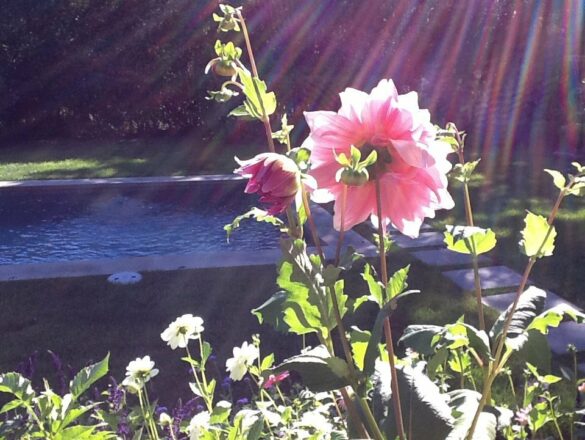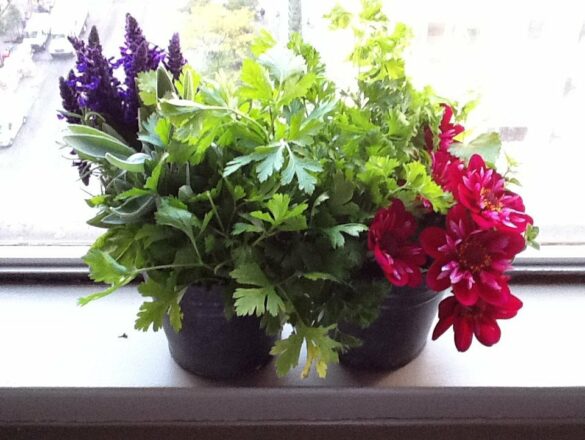BEE COTTAGE-This will be my last weekend at Bee for a while, sorry to say. The Hamptons International Film Festival is in full swing here in East Hampton, and there are a lot of people walking around in all black. Bee Garden is still showing some color, happily, and the herbs will hang on to the end.

Some are perennial and hardy enough to withstand the Long Island winter. My thyme, sage, chives, and mint all come roaring back. (I don’t think anything kills mint, do you?). I bring it up because herbs are so easy to grow, so great to have around, so fragrant, and so nice to use in ways other than culinary.

With their various textures, shapes, and shades of green, they are charming in small arrangements and bouquets.
And unlike highly fragrant flowers – lilies, roses, narcissus – herbs are not offensive on the dinner table because their scents are more savory than sweet and do not clash with the aroma of your salmon.

For a party I gave last summer, miniature buckets from the art supply store were filled with herbs and a little bee (I know, I can’t help myself). “Garden markers” cut from cardboard became place cards. To preserve the herbs, wrap the stems in a bit of wet paper towel – works like a charm.


Oh, and one more thing: When the garden is gone, the grocery store has herbs all year round.
By the way, ornamental sage is generally called salvia, while culinary sage is called sage. Salvia derives from the Latin salvere, meaning “to save,” because of the herb’s healing properties. But all sages are actually part of the huge mint family, Lamiaceae, which contains hundreds of species of shrubs and perennials. I just read that in Wikipedia, in case you were wondering. Didn’t want you to think I was showing off. Happy weekend.



